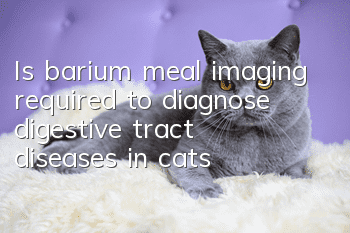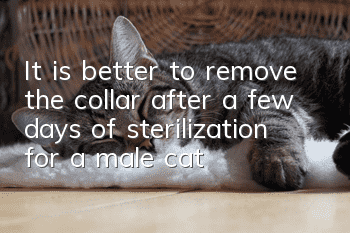Is barium meal imaging required to diagnose digestive tract diseases in cats?

Digestive tract diseases in cats are also very common in breeding. Cats swallow some small objects, causing foreign bodies in the esophagus. Some large foreign bodies can cause the esophagus to expand. Other symptoms such as blood in the stool and diarrhea will also occur in some cats. appears in the disease, then, in order to better diagnose and find out the cause, barium meal imaging is an effective method.
Equipment and preparation
High-frequency mobile X-ray machine, WFC50, contrast agent, barium sulfate dry suspension, Kodak medical X-ray film. Animals generally do not need special preparation before imaging, and animals that are uncooperative can be lightly sedated. Take lateral X-rays immediately after barium injection, and take an appropriate number of photos at different time points to observe the image performance after esophagography.
Barium meal imaging of specific parts
1. Esophageal barium meal angiography
Generally, 20-50ml of 50%-70% barium sulfate is given when imported. If there is suspicion of small fish bone foreign matter, cotton fiber dipped in barium can be given.
Indications: reflux, retching, dysphagia, vomiting of undigested food after eating.
Contraindications: If esophageal perforation is suspected or confirmed, use non-ionized iodine contrast agent instead.
Operating technology
1. Take plain X-rays of the chest and anterior abdomen in lateral and ventrodorsal views. This is important because abnormal images such as foreign objects may be obscured by the contrast agent.
2. Give barium sulfate solution (60%W/V) orally with a syringe, the dose is about 1ml/5kg body weight. Alternatively, if esophageal dilatation is suspected based on plain radiographs, the preferred option is to encourage the animal to eat canned wet food supplemented with 20 to 30 ml of 100% w/v barium sulfate suspension.
3. Immediately after administration of barium sulfate suspension, take pictures of the neck and thoracic esophagus (especially the left side). Sometimes, additional information can be obtained from dorsoventral or ventrodorsal X-rays.
4. If necessary, repeat administration of barium sulfate suspension and repeated X-ray photography.
Potential complications: aspiration pneumonia, vomiting, diarrhea
2. Barium meal angiography of the stomach and small intestine
Indications: persistent vomiting, hematemesis, gastrointestinal displacement accompanied by diaphragm rupture, gastrointestinal displacement assessed by changes in size and position of nearby organs, unexplained distension of the small intestine
Contraindications: Suspected gastrointestinal tract rupture, plain film shows small intestinal dilation, strong suspicion of mechanical obstruction
Operating technology
1. Take plain X-rays of the lateral and ventrodorsal views of the abdomen. This is important because abnormal images such as foreign objects may be obscured by the contrast agent.
2. Administer barium sulfate suspension (30%W/V) orally through a syringe, the dose is about 10ml/kg body weight. Alternatively, a suspension of barium sulfate can be mixed with food to encourage the animal to eat.
3. In order to completely evaluate the stomach, X-rays are taken from 4 angles immediately after administration of contrast agent: right side, left side, ventrodorsal view and dorsoventral view. The center of X-ray shooting is all aimed at the last rib.
4. Assess gastric emptying: Take a repeat X-ray of the stomach 5 to 10 minutes after the initial X-ray to check for any visible damage and assess when normal gastric emptying begins. For cases of delayed gastric emptying, further X-rays can be taken at intervals of 10 to 15 minutes.
5. Evaluate the small intestine: Following the gastric examination, take lateral and ventro-dorsal X-rays at normal intervals according to the intestinal peristalsis speed in each case until the diagnosis is established or the barium enters the large intestine. X-rays should be taken 24 hours after the administration of the contrast agent to confirm that all of the contrast agent has entered the large intestine. If barium sulfate contrast is performed to detect gastrointestinal displacement when examining abdominal foreign bodies or diaphragmatic rupture, a more economical approach is to omit the initial X-ray and take X-rays directly 30 to 45 minutes after administration of the contrast agent. Contrast should be present in the stomach and most of the small intestine at this time.
Potential complications: aspiration pneumonia, vomiting, diarrhea
3. Barium meal angiography of large intestine
Indications: tenesmus, melena, chronic diarrhea, determining the location of the large intestine related to foreign bodies in the posterior abdomen/pelvis
Contraindications: Large foreign bodies in the rectum or colon can prevent the passage of the tube giving barium sulfate solution, and suspected lower gastrointestinal tract rupture
Operating technology
1. Use an enema pump or a gravity tube and funnel to slowly enter the descending colon with a dilute barium sulfate suspension (20% W/V). The dose of contrast agent is usually about 10ml/kg body weight.
2. If the sick animal is sedated or anesthetized, the contrast agent may leak from the anus. The contrast agent can be administered through the Foley tube while the tube is sutured to the rectum.
3. Take lateral and ventro-dorsal X-rays of the abdomen. The image does not need to be taken immediately and is usually taken within 30 minutes of administration of the contrast agent. 4. In addition, "double" imaging can be performed to better evaluate mucosal details. After administering barium contrast agent (approximately 10ml/kg body weight) to cover the mucosa, air (approximately 5ml/kg body weight) is injected to expand the colon.
Potential complications: lower gastrointestinal tract rupture, lower gastrointestinal tract injury, bloody stools, diarrhea.
- What to do if the kitten refuses to sleep
- What should I do if my cat is sick and won’t eat?
- When do kittens get their first dose of vaccine?
- What should I do if my cat is depressed and won’t eat or drink?
- Can cats eat pectin?
- Will there be ascites in the early stage of cat abdominal transmission?
- Cat vomits foamy saliva
- Why should you never keep a civet cat?
- Emergency treatment for vomiting and diarrhea in dogs
- Female cat’s condition three days after neutering



